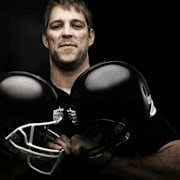Priming the Pump: How Early Training Unlocks Growth and Strength Potential in Young Athlete

During my podcast, we discussed the “priming of the pump” effect with Antonio Squillante, Head of Sport Performance and Training for USA Cycling’s Sprint Program. This concept, rooted in Carmelo Bosco’s research with Italy’s national track and field athletes, explores how early physical training impacts young athletes’ development, especially around puberty. “Priming the pump” essentially means preparing the body to respond more effectively to strength training, potentially accelerating growth and strength gains after puberty.
Carmelo Bosco, a renowned Italian sports scientist, pioneered research on the “priming effect” while working with young track and field athletes. His studies involved training athletes from childhood through their early twenties, investigating how early training influences muscular and physiological responsiveness. Bosco’s main question was whether the priming effect was due to physiological changes, such as increased muscle responsiveness post-puberty, or due to motor learning—teaching young athletes good lifting mechanics, training habits, and intensity.
According to Squillante, Bosco continuously questioned whether priming was purely physiological, related to hormonal and muscular changes, or if it was a result of conditioning athletes to train with proper technique and focus. This debate remains central to understanding priming. On one hand, puberty brings a surge of hormones like testosterone and growth hormone, which naturally boost strength, muscle growth, and recovery. But Bosco also speculated that by teaching good training mechanics and intensity early on, young athletes would be better equipped to handle high-intensity training as they mature, potentially leading to faster strength and growth gains.
One key aspect of the priming effect is the importance of motor learning in young athletes. When children and adolescents are introduced to proper lifting mechanics, safe movement patterns, and discipline, they build a strong foundation of training knowledge. This preparation allows them to lift more effectively and confidently once they reach an age where they can handle heavier loads. Squillante suggested that teaching good technique early on “prepares [athletes] so that as soon as they hit puberty, they can already train at that level of intensity they need to grow.”
The concept of motor learning in priming highlights how early training impacts neuromuscular adaptations. When young athletes learn correct form and movement patterns, their central nervous system becomes better conditioned to recruit muscle fibers efficiently, improving control and coordination. These skills become embedded in the body’s memory, making it easier to train with precision and intensity later. Once an athlete reaches puberty, this foundation allows them to make the most of the physiological changes that support muscle growth and strength.
The other side of the priming effect involves physiological changes that occur during puberty, especially the hormonal shifts that fuel muscle growth and strength. During puberty, the body experiences an increase in testosterone and growth hormone, essential for muscle development, bone density, and recovery. Squillante emphasized that these hormonal shifts amplify the body’s responsiveness to strength training, making it easier to gain muscle and strength.
By priming the body early on with proper training, young athletes can capitalize on these hormonal changes more effectively. When the body is familiar with training movements and techniques, it becomes highly responsive to resistance training once testosterone and growth hormone levels rise. In this way, priming can accelerate the adaptation process, allowing athletes to experience growth and strength gains at an enhanced rate compared to those who have not been exposed to structured training early on.
Squillante pointed out that the priming effect is likely a combination of both motor learning and physiological readiness. Early training creates a foundation of good form and discipline, while puberty brings a surge in hormones that supports muscle growth. This dual effect means that primed athletes can experience accelerated gains as they mature, with training intensity and muscle responsiveness in sync.
By preparing athletes with good mechanics and training habits early on, coaches can help them avoid common training errors, reduce injury risk, and establish a growth-focused mindset. Squillante also observed that this “primed” readiness enables athletes to step into high-intensity training without the same learning curve others face, setting them up for long-term success.
For coaches and trainers, the concept of priming has practical implications in youth development programs. Here are a few key takeaways:
1. Introduce Strength Fundamentals Early: Start by teaching young athletes basic movement patterns, safe mechanics, and the importance of consistency. Avoid heavy lifting and focus on building a solid foundation of skills that will prepare them for more intense training in later years.
2. Emphasize Technique and Discipline: Developing good form and training habits early allows athletes to train more effectively post-puberty. Coaches should encourage focus, consistency, and a strong work ethic to set the stage for future growth.
3. Understand the Role of Hormones: Remember that physiological changes in puberty enhance an athlete’s ability to gain muscle and strength. The more prepared their bodies are through early training, the better they can take advantage of these natural growth periods.
4. Balance Training with Fun: In youth training, balance structured practice with fun activities to keep young athletes engaged and motivated. This balance ensures they build foundational skills without burnout.
The priming of the pump effect offers valuable insights into how early training can maximize strength, growth, and resilience. Through a mix of motor learning and physiological readiness, young athletes who receive foundational training are better prepared to handle the demands of high-intensity training during and after puberty. As Squillante and Bosco’s work suggests, when youth training is done well, athletes can achieve accelerated gains that set the stage for peak performance and long-term athletic success.
